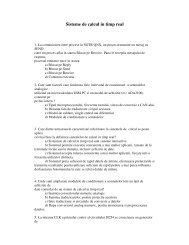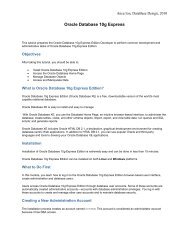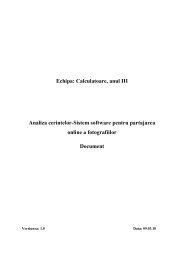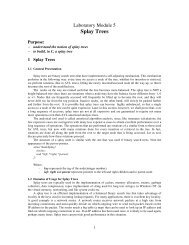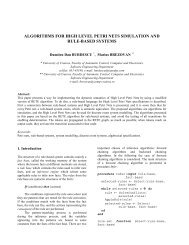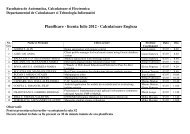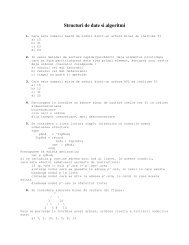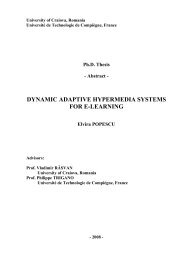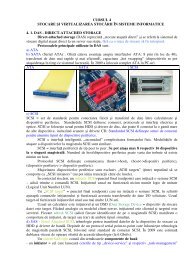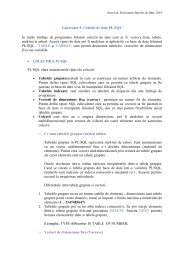Mining Frequent Itemsets – Apriori Algorithm
Mining Frequent Itemsets – Apriori Algorithm
Mining Frequent Itemsets – Apriori Algorithm
Create successful ePaper yourself
Turn your PDF publications into a flip-book with our unique Google optimized e-Paper software.
Conviction<br />
The conviction of a rule is defined as:<br />
→ =<br />
− <br />
− → <br />
The rule {milk,bread}=>{butter} has the following conviction:<br />
1 <strong>–</strong> supp({butter})/ 1- conf({milk,bread}=>{butter}) = 1-0.46/1-0.65 = 1.54<br />
The conviction of the rule X=>Y can be interpreted as the ratio of the expected frequency that X<br />
occurs without Y (that is to say, the frequency that the rule makes an incorrect prediction) if X and Y were<br />
independent divided by the observed frequency of incorrect predictions.<br />
In this example, the conviction value of 1.54 shows that the rule {milk,bread}=>{butter} would be<br />
incorrect 54% more often (1.54 times as often) if the association between X and Y was purely random<br />
chance.<br />
2. <strong>Apriori</strong> algorithm<br />
General Process<br />
Association rule generation is usually split up into two separate steps:<br />
1. First, minimum support is applied to find all frequent itemsets in a database.<br />
2. Second, these frequent itemsets and the minimum confidence constraint are used to form rules.<br />
While the second step is straight forward, the first step needs more attention.<br />
Finding all frequent itemsets in a database is difficult since it involves searching all possible itemsets<br />
(item combinations). The set of possible itemsets is the power set over I and has size 2 n − 1 (excluding the<br />
empty set which is not a valid itemset). Although the size of the powerset grows exponentially in the<br />
number of items n in I, efficient search is possible using the downward-closure property of support (also<br />
called anti-monotonicity) which guarantees that for a frequent itemset, all its subsets are also frequent and<br />
thus for an infrequent itemset, all its supersets must also be infrequent. Exploiting this property, efficient<br />
algorithms (e.g., <strong>Apriori</strong> and Eclat) can find all frequent itemsets.<br />
<strong>Apriori</strong> <strong>Algorithm</strong> Pseudocode<br />
procedure <strong>Apriori</strong> (T, minSupport) { //T is the database and minSupport is the minimum support<br />
L1= {frequent items};<br />
for (k= 2; L k-1 !=∅; k++) {<br />
C k = candidates generated from L k-1<br />
//that iscartesian product L k-1 x L k-1 and eliminating any k-1 size itemset that is not<br />
//frequent<br />
for each transaction t in database do{<br />
#increment the count of all candidates in C k that are contained in t<br />
L k = candidates in C k with minSupport<br />
}//end for each<br />
}//end for<br />
return ⋃ ;<br />
}<br />
As is common in association rule mining, given a set of itemsets (for instance, sets of retail<br />
transactions, each listing individual items purchased), the algorithm attempts to find subsets which are<br />
common to at least a minimum number C of the itemsets. <strong>Apriori</strong> uses a "bottom up" approach, where<br />
frequent subsets are extended one item at a time (a step known as candidate generation), and groups of<br />
candidates are tested against the data. The algorithm terminates when no further successful extensions are<br />
found.



